 W
WSir John Francis Edward Acton, 6th Baronet was a French-born English gentleman who served as Commander of the naval forces of the Grand Duchy of Tuscany and later as Prime Minister of the Kingdom of Naples under Ferdinand IV. He served at Naples during the turbulent times when French Revolutionary fervour under Napoleon was sweeping across Europe and threatening to extinguish the monarchy he served.
 W
WPrince Alberto of Naples and Sicily was a Prince of Naples and Sicily. He died on board HMS Vanguard, a British Royal Navy vessel.
 W
WFrancesco Alborea was an Italian cellist, also known as Franciscello or Francischello.
 W
WMaria Angela Ardinghelli (1730–1825) was an Italian translator, mathematician, physicist and noble, mostly known as the Italian translator of the works of Stephen Hales, a Newtonian physiologist. She translated two of his works; Haemastaticks and Vegetable Staticks. Aside from Ardinghelli's historical invisibility, she managed to remain relevant without being shunned into social isolation or derision by sharing her works with specific audiences.
 W
WCarolina Bassi was an Italian contralto.
 W
WDomenico Pignatelli di Belmonte was an Italian Cardinal of the Roman Catholic Church.
 W
WRestaino Cantelmo-Stuart, 8th Duke of Pópoli, 3rd Prince of Pettorano was a military leader from Naples in the service of Spain, best known for the Siege of Barcelona (1713–14).
 W
WCarlo Caputo was a Roman Catholic priest. He was diocesan bishop of Monopoli and Aversa, then titular bishop of Nikomedia and from 1904 to 1907 apostolic nuncio to the Kingdom of Bavaria.
 W
WPrince Francesco Caracciolo was an Italian admiral and revolutionist.
 W
WGiacomo Colombo was an Italian sculptor, painter and engraver, he worked in Naples, Italy in the late 17th and early 18th centuries.
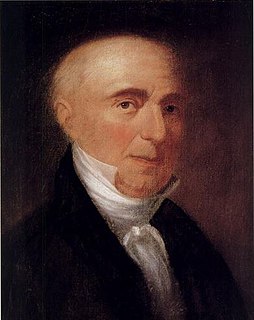 W
WMichele Felice Cornè (1752–1845) was an artist born in Elba who settled in the United States. He lived in Salem and Boston, Massachusetts; and in Newport, Rhode Island. He painted marine scenes, portraits, and interior decorations such as fireboards and murals.
 W
WRoger de Damas was a French Army officer and Royalist general who fought against the French Revolutionary forces in order to assist the Russian Empire and the Kingdom of Naples.
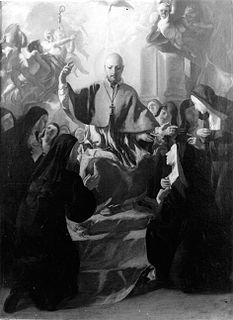 W
WLorenzo de Caro was an Italian painter, active in the late Baroque style in his native city of Naples.
 W
WFra Diavolo, is the popular name given to Michele Pezza, a famous guerrilla leader who resisted the French occupation of Naples, proving an "inspirational practitioner of popular insurrection". Pezza figures prominently in folk lore and fiction. He appears in several works of Alexandre Dumas, including The Last Cavalier: Being the Adventures of Count Sainte-hermine in the Age of Napoleon, not published until 2007 and in Washington Irving's short story "The Inn at Terracina".
 W
WBernardo de' Dominici or Bernardo De Dominici was an Italian art historian and painter of the late-Baroque period, active mainly in Naples. As a painter he was known for his landscapes, marine vedute and genre scenes in a style characteristic of the Bamboccianti. He is now mainly known for his art historical writings and in particular the Vite dei Pittori, Scultori, ed Architetti Napolitani, a three volume collection of brief biographies of Neapolitan artists.
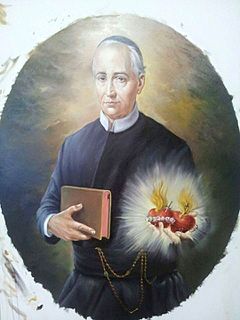 W
WGaetano Errico was an Italian Roman Catholic priest from Naples and the founder of the Missionari dei Sacri Cuori di Gesù e Maria. Errico was born to devout and hardworking parents whose income was modest but sufficient for him to do his ecclesial studies in Naples. It was common for him to be seen twice a week tending to the ill despite his studies and he also helped his father on occasion at his warehouse. He became a teacher after his ordination and later a parish priest.
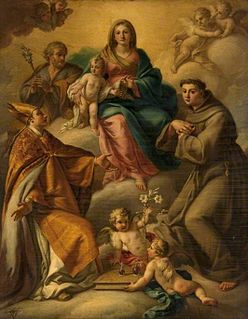 W
WFedele Fischetti was an Italian painter of the Neoclassical period. He was born and died in Naples.
 W
WPrince Gennaro of Naples and Sicily was a Prince of Naples and Sicily. He died of smallpox at age 8. He and his mother are the central figures of a portrait by Angelica Kauffman in 1783.
 W
WFrancesco del Giudice was a Roman Catholic cardinal from 1690 to 1725 who also held a variety of other ecclesiastical and governmental offices.
 W
WGennaro Greco also known as "Il Mascacotta" (1663–1714) was an Italian architectural painter who was active in Naples during the late Baroque period. He is known for his architectural paintings, capricci, compositions with ruins, as well as his vedute. His vedute fall mostly in the category of the so-called vedute ideate which represent closely observed views of completely imaginary landscapes.
 W
WPrince Giuseppe of Naples and Sicily was the first "Prince of Naples and Sicily". The title was later conferred by Joseph Bonaparte to be hereditary on his children and grandchildren.
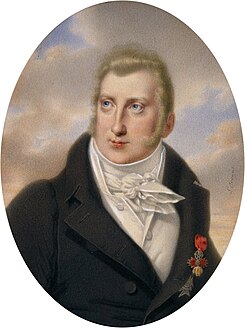 W
WLeopoldo Giovanni Giuseppe Michele of Bourbon-Two Sicilies, Prince of Salerno was a member of the House of Bourbon-Two Sicilies and a Prince of Bourbon-Two Sicilies.
 W
WLuisa of Naples and Sicily, was a Neapolitan and Sicilian princess and the wife of the third Habsburg Grand Duke of Tuscany.
 W
WPrincess Maria Anna of Naples and Sicily was a member of the Spanish Royal Family.
 W
WPrincess Maria Isabelle of Naples and Sicily was a member of the House of Bourbon.
 W
WMaria Theresa of Naples and Sicily was the last Holy Roman Empress and the first Empress of Austria by marriage to Francis II, Holy Roman Emperor. She was the eldest daughter of Ferdinand IV & III of Naples and Sicily (1751–1825) and Marie Caroline of Austria (1752–1814).
 W
WMary Frances of the Five Wounds, was an Italian member of the Third Order of St. Francis, who is honored as a saint in the Catholic Church.
 W
WLuis Egidio Meléndez (1716–1780) was a Spanish painter. Though he received little acclaim during his lifetime and died in poverty, Meléndez is recognized as the greatest Spanish still-life painter of the 18th century. His mastery of composition and light, and remarkable ability to convey the volume and texture of individual objects enabled him to transform the most mundane of kitchen fare into powerful images.
 W
WAnna Mombelli, born Marianna Mombelli, was an Italian opera singer who sang both mezzo-soprano and contralto roles. She is primarily known for having created the role of Siveno in Rossini's first opera Demetrio e Polibio in 1812.
 W
WMaria Ester Mombelli was an Italian opera singer particularly known for her performances in operas by Rossini and Donizetti. She sang both soprano and mezzo-soprano roles, and often sang with her younger sister Anna.
 W
WFrancesco de Mura was an Italian painter of the late-Baroque period, active mainly in Naples and Turin. His late work reflects the style of neoclassicism.
 W
WFrancesco Mario Pagano was an Italian jurist, author, thinker, and the founder of the Neapolitan school of law. He is regarded as one of the most influential Enlightenment thinkers. A moderate reformist, he is seen as a forerunner of the Italian unification.
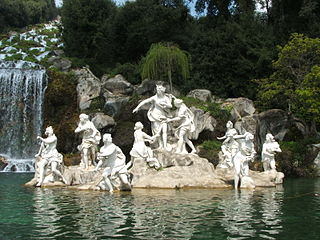 W
WPaolo Persico, was an Italian sculptor of the late-Baroque, active at and near Naples.
 W
WAntonie or Anton Sminck Pitloo was a Dutch painter. His surname was originally Pitlo, but he added the extra "o" because he was often mistaken for an Italian while resident in Italy. In Italian he is also known as Antonio van Pitloo.
 W
WBasilio Puoti was an Italian literary critic, lexicographer and grammarian.
 W
WFilippo Raguzzini was an Italian architect best known for a range of buildings constructed during the reign of Benedict XIII.
 W
WZenobia Revertera, duchess di Castropignano was an Italian noble and courtier. She was an influential favorite of the queen of Naples, Maria Amalia of Saxony.
 W
WRinaldo Rinaldi was an Italian Sculptor.
 W
WVincenzo Romano – born Vincenzo Domenico Romano – was an Italian Roman Catholic priest born in Torre del Greco in Naples. Romano was a parish priest of the village of Herculano who was noted for his simplistic and frugal manner of living and for his great care of orphans. But the French invaders in his area in addition to some of the Italian political groups oppressed him and his work. The people of Torre del Greco granted him the nickname "The Worker Priest" due to Romano's tireless work with the poor and for his commitment to the social needs of all people in the Neapolitan region. He was also noted for his efforts in rebuilding much of Naples following the 1794 eruption of Mount Vesuvius in which he himself cleared rubble and organized rebuilding efforts.
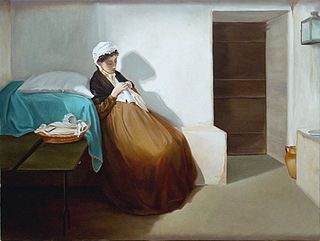 W
WLuisa or Luigia Sanfelice (1764–1800) was an Italian aristocrat who was executed by Ferdinand I of the Two Sicilies because of her involvement with the French-backed Parthenopean Republic during the French Revolutionary Wars although Sanfelice was largely apolitical. As she was generally regarded as the innocent victim of circumstances, she became a legendary figure who was widely portrayed in popular culture. During the nineteenth century she was often depicted as a gentle and naïve beauty whose story closely resembled that of the fictional Fioria Tosca, heroine of the Puccini opera Tosca.
 W
WGiuseppe Sanmartino or Giuseppe Sammartino was an Italian sculptor during the Rococo period.
 W
WGennaro Maria Sarnelli was an Italian Roman Catholic priest and a professed member from the Redemptorists. Sarnelli was one of Saint Alphonsus Maria de' Liguori's earliest companions and a prolific writer on a range of religious topics. He wanted to become a Jesuit though was dissuaded from this before working in the Hospital of the Incurables where he call to the priesthood blossomed. His apostolic zeal knew no limits: he preached missions and aided his friend Liguori in his work; he tended to the sick and helped to get girls out of prostitution despite the threats levelled against him.
 W
WGiuseppe Domenico Scarlatti, also known as Domingo or Doménico Scarlatti; was an Italian composer. He is classified primarily as a Baroque composer chronologically, although his music was influential in the development of the Classical style. Like his renowned father Alessandro Scarlatti, he composed in a variety of musical forms, although today he is known mainly for his 555 keyboard sonatas. He spent much of his life in the service of the Portuguese and Spanish royal families.
 W
WTroiano Acquaviva of Aragon was an Italian cardinal and Catholic archbishop. Acquaviva was from a noble family with close ties to the Spanish crown; he was the nephew of Cardinal Francesco Acquaviva d'Aragona. Created cardinal in 1732, the following year he became cardinal-protector of Santa Cecilia in Trastevere, for which he provided a new façade. In 1734 King Philip V of Spain appointed him Spanish ambassador to the Holy See.
 W
WCarlo Troya was a historian and politician who served as Prime Minister of the Two Sicilies from 3 April 1848 until 15 May 1848. Politically, he was a liberal Neo-Guelph who supported Italian unification. His primary historical interest was the study of the Early Middle Ages, to which he made lasting contributions.
 W
WDomenico Antonio Vaccaro was an Italian painter, sculptor and architect. He created many important sculptural and architectural projects in Naples. His later works are executed in an individualistic Rococo style.
 W
WLorenzo Vaccaro was an Italian late-Baroque sculptor. He worked in a formalized restrained style.
 W
WNicola Vaccaro was an Italian painter, theatre director and opera librettist in Naples. He was known for his religious and allegorical paintings who created easel paintings as frescos. He was a specialist figure painter who regularly collaborated with specialist still life painters on decorative Baroque still lifes and garland paintings. Vaccaro attempted to adapt the stylistic features of 17th-century Neapolitan tradition to the new Classicist and Baroque trends towards increasing Arcadian tendencies. He proposed his own specific form of Academism, aimed at revitalizing the figurative culture in Naples.
 W
WLuigi Vanvitelli, known in Dutch as Lodewijk van Wittel, was an Italian engineer and architect. The most prominent 18th-century architect of Italy, he practised a sober classicising academic Late Baroque style that made an easy transition to Neoclassicism.
 W
WGiambattista Vico was an Italian political philosopher and rhetorician, historian and jurist of the Age of Enlightenment. He criticized the expansion and development of modern rationalism, was an apologist for Classical Antiquity, finding Cartesian analysis and other types of reductionism impractical to daily life, and was the first expositor of the fundamentals of social science and of semiotics.
 W
WAngelo Viva was an Italian sculptor. His important works are the statuary La fontana del ratto di Europa, the Statues of the Evangelists in the Chapel Pappacoda, the decorations of the Obelisk of Portosalvo and the funeral monument of Giovanni Paisiello visible today in the church of Santa Maria Donnalbina. He also carried out a restoration of the Nile God Statue, Naples. He also did the facades of the Santa Maria di Montesanto, Naples.
 W
WPankraz Vorster was a Swiss abbot. He served as the last abbot of the Abbey of Saint Gall, from 1796 to 1805.